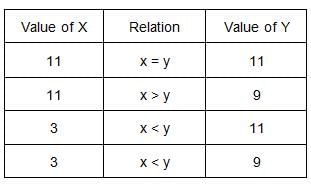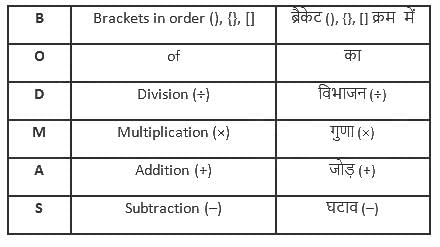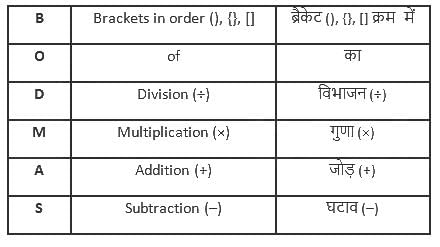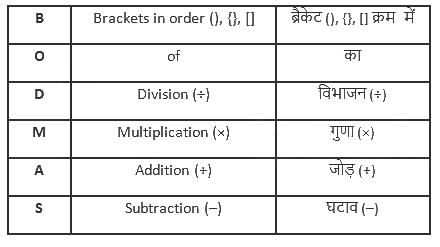Numerical Ability Test - 4 - Bank Exams MCQ
30 Questions MCQ Test - Numerical Ability Test - 4
What will come in the place of the question mark '?' in the following question?
64% of 2500 + 75% of 1200 + 40% of 500 = ? × 125
What value can come in place of the 'x' in the question below?
14 + 39 + 26
+ 39 + 26 -
-  =
= 
 + 39 + 26
+ 39 + 26 -
-  =
= 
In the given questions, two equations numbered l and II are given. You have to solve both the equations and mark the appropriate answer
I. x2 – 14x + 33 = 0
II. y2 – 20y + 99 = 0
I. x2 – 14x + 33 = 0
II. y2 – 20y + 99 = 0
Find the difference between the number of girls students who choose Computer and Maths subject.
Find the number of Girls students who choose Maths subject is approximately what percent of the total number of students who choose Maths subject?
Find the number of girls students who choose Computer is approximately what percent less than the total number of girls students?
Ratio of sides of a cuboid is 6 : 4 : 5 and its volume is 3240 cm3. If the total surface area of the cuboid is 156 cm2 more than the total surface area of a cube then what is the length of the side of the cube?
In what proportion must tea worth Rs. 27 and Rs. 31 per kg be mixed so as to gain 25 per cent by selling the mixture at Rs. 36 per kg?
An amount of Rs. 2,430 is divided between A, B and C such that if their shares be reduced by 5, 10 and 15 rupees respectively, the remainders shall be in the ratio of 3 ∶ 4 ∶ 5. Then, B's share was
What approximate value should come in place of the question mark (?) in the following question? (You are not expected to calculate the exact value)
(340789 + 260108) ÷ (8936 - 3578) = ?
What will come in place of question mark ‘?’ in the following question?
√841 + √361 - √324 = ? × √225
What will come in place of question mark (?) in the following equation?
494 - 15 × 8 + 43 - 77 = ?2
A train travelling with a speed of 90 km/hr took 15 sec to cross a man riding a bike in the opposite direction at a speed of 35 km/hr and takes 45 sec to cross platform. What is the length of the train and platform?
In the given question,two equations numbered l and II are given. You have to solve both the equations and mark the appropriate answer
I) x2 – 15x + 56 = 0
II) y2 – 4y - 5 = 0What should come in place of question mark (?) in the following questions?
120 ÷ 5 × (3)3 ÷ 9 = (?) ÷ [8 ÷ (?)]Directions: What approximate value should come in place of question mark (?) in the following question? (You are not expected to calculate the exact value).
7985 ÷ 115 × 22 = ? × 8There are two right circular cylinders, the volume of first one is thrice of the volume of the second one. If the ratio of their height is 5 ∶ 2, find the ratio of their radii.
Find the ratio of the number of books published in Mathematics and Biology.
Number of Books Published in Economics subject is What Percentage of the number of books published in Chemistry subject.
Find the average number of Books Published in Physics & Biology Subject together.
If in Chemistry Subject 70% of the number of books Published is sold. then find the number of sold books in Chemistry.
Find out the wrong number in the following series
120, 102, 84, 72, 60, 50
Find the wrong term in the series given below:
144, 1197, 196, 3375, 256
Find the wrong term in the following series.
5, 11, 19, 29, 40, 55
Find the wrong term in the given series.
1, 8, 27, 64, 125, 344
What approximate value will come in the place of the question mark ‘?’ in the following question?
√400 ÷ 3.87 + (4.96)2 = ?
Directions: Determine the approximate value of ‘?’ in the following question. (You are not expected to calculate the exact value)
(6317.7 - 6167.8) × 6.06 = (?)2




 =
= 


 =
= 


 =
= 
 +
+  )]
)]  =
= 



 = 16
= 16


 = 800
= 800













